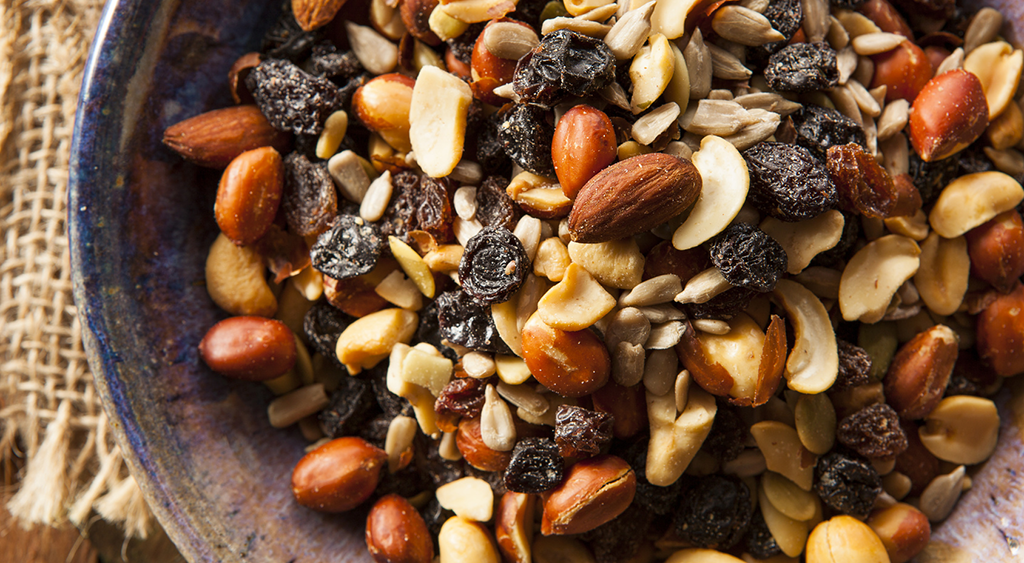
Helping your employees make healthy food choices is one of the most effective ways to control healthcare costs and contribute to their overall well-being. Eating habits are the primary cause of disability and disease globally. Research shows that food affects health more than tobacco, lack of physical activity, and even drug use.
Your organization’s cafeteria is a natural place to start creating a healthy workplace. But you can trade the doughnuts for a smoothie bar, potato chips for baked kale chips only to find that not all “healthy” foods are created equal.
Too often, foods are marketed as “healthy” based on what’s trendy, not on sound nutrition. These foods may contain as much calories, fat, sugar and sodium as what they’re trying to replace.
Here are five “hidden trap” foods lurking in your cafeteria, what to offer instead, and expert advice on making your cafeteria a healthier place for employees to eat.
1. Smoothies
Smoothies seem like an ideal meal replacement, lighter than a carb-heavy muffin or sugary doughnut. They’re a trap, though, because smoothies can be served in unusually large portions or they may be made with too much added sugar. Commercially-made smoothies may rely too much on refined sweeteners like honey, syrup or juice concentrate for sweetness.
A large banana-strawberry-protein smoothie from a popular chain, for example, contains 70 grams of sugar, which could be your entire recommended daily intake.
What to Offer Instead: Ditch the blender and just offer fresh fruit, along with 100% fruit juice. It’s the best way for your employees to get the nutritional benefits of the fruit without drinking high-calorie, sugary smoothies.
2. Bran Muffins
Let’s stop fooling ourselves: Most muffins are just cupcakes without the icing. But even if you bypass the double-chocolate and the blueberry streusel, the bran muffin is still lying in wait. While it might have less sugar than the more dessert-like muffins, the bran muffin is still likely to be oversized and calorie-rich. Some bran muffins pack as much as 800 calories—and a McDonald’s Big Mac has only 563.
What to Offer Instead: For the morning carb fix, switch to plain whole-grain bagels – they have less fat, less sugar, and are a more reasonable serving size. Serve them with whipped cream cheese instead of regular for a 30% calorie reduction per tablespoon.
3. Granola
The combination of baked oats and nuts in granola isn’t unhealthy by itself. It’s the sugar added in to make it palatable that tips the scales. A half cup of a popular granola brand has more sugar and calories than a serving of Count Chocula cereal. And it doesn’t even turn your milk into chocolate milk!
What to Offer Instead: Meusli is similar to granola as a cereal or as a yogurt topping. But it’s not baked and doesn’t contain added sugar. That makes for a healthier breakfast, and reduces the likelihood of snacking on it throughout the day, as it won’t activate cravings for sweets the same way sugary granola does.
4. Salad bars
There’s nothing wrong with a good salad—that is, one that is made primarily of leafy greens, fresh vegetables, chopped fruit and a spritz of dressing. The problem is, most salad bars aren’t configured to encourage that kind of salad-building. Cheese, meat, boiled eggs, and creamy dressings add up to a meal laden with calories and saturated fat.
What to Offer Instead: Keep your salad bar focused on the good stuff. Give chopped veggies, lettuce, spinach and kale the prime real estate, and put the cheese and meat in the back (or skip it altogether). Offer salad dressing made with healthy fats such as balsamic vinaigrette made from olive oil. A spritzer bottle can help employees use less dressing without sacrificing flavor. Last but not least, offer smaller plates to encourage portion control.
5. Trail Mix
Compared to a bag of potato chips, trail mix is a better option. But there’s a reason it’s called “trail mix.” The snack was created to give hikers an energy boost, with plenty of calories, fat, sugar, and salt to keep them moving. Most trail mix includes salted peanuts, sweetened dried fruit, and straight-up candy. Just a cup of trail mix can have nearly 700 calories.
The calorie overload is compounded by a lack of portion control – offer trail mix in bulk, and it’s easy for people to mindlessly eat hundreds of calories over the course of the work day..
What to Offer Instead: Offer fresh (not dried) fruit and lightly-salted or unsalted nuts. Offer nuts in portion-controlled packages instead of in bulk to keep the calorie count in snack territory (think: less than 300 calories per serving).
Encourage Healthy Choices
Offering healthier food is a good start to helping your employees make better food choices. The next step is making healthy choices easier — making eating well as simple and mindless as eating poorly.
For example, health and wellness company Unidine takes a unique approach to promoting healthy snacking. When employees eat a meal at the cafeteria, they can pay an extra dollar for a healthy snack to enjoy later in the day.
Search engine giant Google takes healthy cafeteria options to the next level, using behavioral science to encourage better eating habits. Smaller plates at the buffet, giving pride of place to healthy options, and adding kitchen scales to help employees better judge portions all help contribute. “Everyone has work that they are trying to get done, so you don’t want to think a lot about what they are going to grab as a snack,” says Google’s Head of People Analytics Jennifer Kurkoski. “So let’s make the thing that people default to the healthiest one possible.”
The ultimate solution for a healthier cafeteria is less about food substitution and more about changing behaviors. It’s about removing obstacles, making healthy choices as much of a no-brainer as calorie-dense, nutrient-light alternatives currently are.
Zipongo is a digital nutrition platform that makes healthy eating easy for your employees at work, at home, and on the road. Learn more about how an emphasis on nutrition can increase the ROI of your corporate wellness program.


